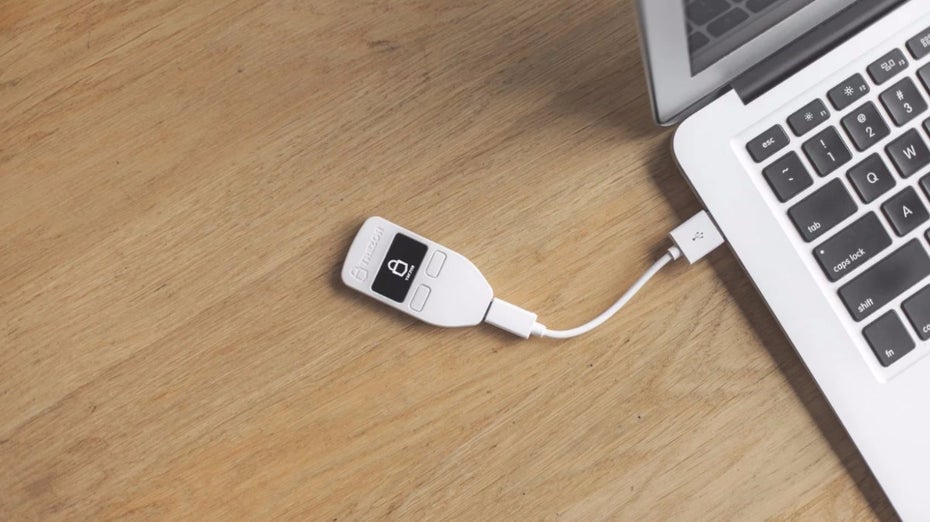Is a self-custodial wallet right?
The bankruptcy of what was once the second largest crypto exchange, FTX, damaged many customers and showed how bad things can end when investors rely on central providers. No-coiners in particular are now asking themselves: Should I really still be putting money into crypto when my values can disappear so quickly?
It’s worth taking a close look at this question: Was the error in the system or in FTX? The now insolvent crypto exchange was a central and largely unregulated provider of crypto services. Whoever uses such a service takes on a so-called counterparty risk. From our topic special “New Finance”.
However, cryptocurrencies have started to make exactly these middlemen superfluous. But how do crypto investments work without a central provider?
Editor’s Recommendations
First, let’s look at what FTX has offered as an example of a core crypto services provider. In order to be able to trade via FTX, customers had to deposit first. Even if only for a short period of time, the exchange managed the values of the customers. As recently became clear, FTX has embezzled client funds.
That is why crypto fans use the slogan “Not your keys, not your coins” to point out that the depositors are becoming dependent. Because if you have your coins stored by a central service provider such as FTX, other exchanges or wallet providers, you no longer keep your private keys, which are something like passwords for crypto wallets, yourself.
If you want to take responsibility for your crypto values yourself, you can use a so-called self-custodial wallet. In this way, the coins and tokens are held without a central intermediate instance. “Basically, it’s like keeping money in a vault at home instead of depositing it in the account and entrusting it to the bank,” explains Cyrus de la Rubia, chief economist at Hamburg Commercial Bank and an expert on monetary policy and digital currencies.
“However, banks are regulated and deposits are protected up to a certain amount by deposit insurance,” the expert differentiates between traditional financial institutions and often unregulated crypto service providers such as FTX.
The risk of losing the crypto assets is comparatively low when you keep them yourself, says de la Rubia. However, this level of personal responsibility is not ideal for everyone. “If an investor chronically forgets their pins or misplaces the notepad, then the same may happen to that person with the seed phrase required for the self-custodial wallet.”
“Fees for transactions are relatively high with self-custodial wallets” – Cyrus de la Rubia
A major disadvantage of self-managed wallets are the transaction fees. “They are relatively high because the transactions take place directly on a blockchain and, in the case of Ethereum, therefore require gas fees,” says de la Rubia.
If you want to store your crypto assets yourself, you have the choice between different types of wallets: online and offline. The decentralized online services are referred to as “hot wallets”, while the offline variants that are separate from the network are called “cold wallets”.
Metamask is one of the most well-known hot wallets and runs on the Ethereum blockchain. It is a DApp, i.e. a decentralized app that customers can use on the go or set up as an add-on for different browsers. Here they can trade, send and store tokens and use other decentralized services. Thus, the DApp also enables access to blockchain games and acts as a storage location for NFT. According to its own information, Metamask has over 30 million users.
The Ultimate app from German fintech Unstoppable Finance offers similar services. Curated Defi logs can be used, tokens can be traded and stored via the app. Users can store private keys in a cloud, which is intended to create additional security. However, the app is not yet available in Germany for regulatory reasons.
Ultimate wants to accompany users in the world of decentralized finance. (Screenshot: Unstoppable Finance/t3n)
A disadvantage of hot wallets is that they are constantly connected to the internet and are therefore vulnerable to malware. To avoid this, cold wallets are disconnected from the internet again after the assets have been transferred. Cold wallets are available, for example, as paper walletwhere private and public key exist on paper.
The physically existing hardware wallets work differently. Providers for this are, for example, Trezor or Ledger. They offer different cold wallet models for Bitcoin, Ethereum and other cryptocurrencies. The devices are similar to USB sticks and some have a display. Coins can be traded via app or in the browser and transferred to the hardware wallet.
The models from Trezor with a display are available for around 70 euros or 250 euros, depending on the model. Legder devices are available from around 80 euros.

Bitcoin and other cryptocurrencies can be stored on hardware wallets like this one from Trezor. (Photo: SatoshiLabs)
Revenue from hardware wallet provider Trezor, for example, is said to have risen more than 300 percent after FTX collapsed. Across from Cointelegraph The CEO of the competitor Ledger, Pascal Gauthier, is said to have spoken of an increase in the past few weeks. Six times as many new accounts are said to have been created with the hardware wallet provider than just a few weeks ago.
The inflows of crypto assets to cold storeages such as ledgers are also said to have increased. However, data from blockchain analysis house Chainalysis indicates that the trend towards self-custody of crypto assets is not as widespread as is often assumed.



